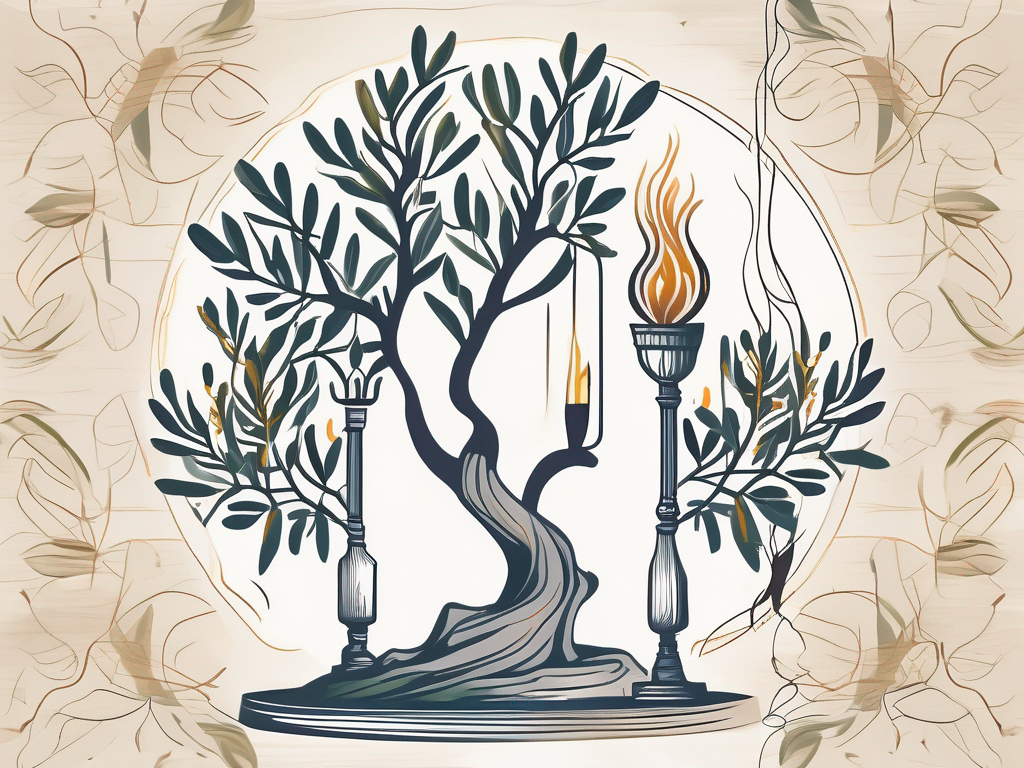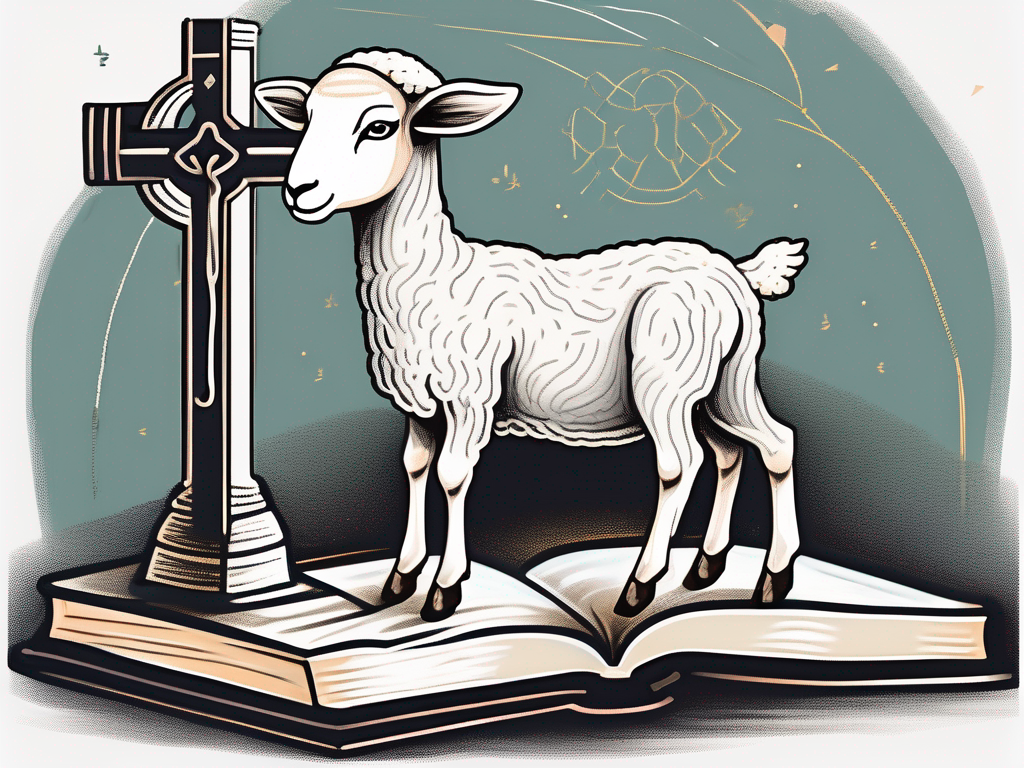The story of Esther is one of the most captivating accounts in the Bible. It is a tale of intrigue, bravery, and divine intervention that has captivated readers for centuries. Understanding the historical context of Esther’s story allows us to fully appreciate the significance of her actions and the impact they had on the Jewish people.
Understanding the Historical Context of Esther’s Story
In order to understand the story of Esther, we must first delve into the historical backdrop against which it unfolds. The events take place during the time of the Persian Empire, a vast and powerful kingdom that extended from Egypt to India. The Jews had been exiled to Babylon after the destruction of Jerusalem, and when the Persians conquered Babylon, they allowed the Jews to return to their homeland.
The Persian Empire and Jewish Exile
The Persian Empire was known for its tolerance towards various ethnic and religious groups. However, the Jews found themselves in a precarious position, caught between their allegiance to God and the pressures of assimilation into Persian society. This tension sets the stage for the events that unfold in the story of Esther.
As the Jews returned to their homeland, they faced numerous challenges. They had to rebuild their lives and their city, Jerusalem, which lay in ruins. The process of reconstruction was not easy, as they had to contend with limited resources and opposition from neighboring regions. Despite these obstacles, the Jews persevered, driven by their faith and determination to restore their identity as a nation.
Within the Persian Empire, the Jews were granted a degree of autonomy, allowing them to govern themselves to some extent. However, they still had to navigate the complexities of Persian politics and maintain a delicate balance between their own customs and the expectations of their Persian rulers. This delicate dance between loyalty and self-preservation would become a recurring theme in the story of Esther.
The Role of Women in Ancient Persia
In ancient Persia, women held a significant degree of power and influence. They were not confined to the traditional roles of wives and mothers but actively participated in the political and social affairs of the empire. This aspect of Persian society plays a crucial role in Esther’s rise to prominence and her ability to impact the course of history.
Esther, a young Jewish woman, finds herself thrust into the center of power when she is chosen to be part of King Ahasuerus’ harem. In this position, she gains access to the inner workings of the palace and becomes privy to the king’s decisions and plans. Esther’s intelligence, beauty, and charm captivate the king, leading to her eventual rise as queen.
As queen, Esther wields a considerable amount of influence over the king and the affairs of the empire. She uses her position to advocate for her people, the Jews, who face persecution and annihilation due to the machinations of the wicked Haman. Esther’s courage and strategic thinking enable her to navigate the treacherous waters of palace politics and ultimately save her people from destruction.
The story of Esther serves as a testament to the power of individuals to shape history, even in the face of seemingly insurmountable odds. It highlights the complexities of identity, loyalty, and the struggle for survival in a foreign land. Through Esther’s story, we gain insight into the rich tapestry of ancient Persian society and the indomitable spirit of the Jewish people.
The Main Characters in the Book of Esther
To fully appreciate the story of Esther, it is essential to familiarize ourselves with the main characters who play integral roles in the narrative. Each character brings their own unique qualities and motivations, contributing to the complex web of intrigue and conflict that unfolds.
Esther: The Jewish Queen of Persia
Esther, a young Jewish girl, finds herself unexpectedly thrust into the position of queen after winning the heart of King Ahasuerus. Her courage and determination make her a central figure in the unfolding drama, as she becomes a catalyst for change and a symbol of hope for her people.
Esther’s journey from a humble orphan to the queen of Persia is a testament to her resilience and strength. Despite the challenges she faces, she remains steadfast in her faith and uses her newfound power to advocate for justice and protect her people. Her ability to navigate the treacherous world of palace politics and make difficult decisions showcases her wisdom and maturity beyond her years.
Throughout the story, Esther’s character develops and grows as she grapples with the weight of her responsibilities and the risks she must take to save her people. Her unwavering commitment to her faith and her unwavering love for her people make her a truly remarkable and inspiring protagonist.
King Ahasuerus: The Persian Monarch
King Ahasuerus, a powerful ruler, is initially portrayed as a somewhat capricious and easily influenced king. However, as the story progresses, we witness his growth and transformation as he learns from his mistakes and values justice and loyalty.
King Ahasuerus’ character arc is one of redemption and self-discovery. His initial lack of discernment and reliance on others’ opinions lead to disastrous consequences, but he eventually realizes the importance of making informed decisions and taking responsibility for his actions.
As the king, Ahasuerus holds immense power and authority, but it is his ability to listen and learn from those around him that sets him apart. His willingness to change and his desire to do what is right make him a complex and compelling character in the story.
Mordecai: Esther’s Cousin and Guardian
Mordecai serves as a mentor and protector to Esther, guiding her through the intricate palace politics and providing wise counsel. His refusal to bow down to Haman sets in motion a chain of events that ultimately leads to the salvation of the Jewish people.
Mordecai’s unwavering loyalty to his people and his commitment to his faith make him a pillar of strength throughout the story. Despite the risks involved, he remains steadfast in his refusal to compromise his beliefs and principles.
As Esther’s cousin and guardian, Mordecai plays a crucial role in shaping her character and preparing her for the challenges she will face as queen. His wisdom and guidance provide her with the necessary tools to navigate the treacherous waters of the palace and make difficult decisions.
Furthermore, Mordecai’s actions highlight the importance of standing up against injustice and oppression. His unwavering determination to protect his people serves as an example of courage and resilience for generations to come.
Haman: The Villain of the Story
Haman, a high-ranking official in the Persian court, becomes the chief antagonist in the story of Esther. His deep-seated hatred for the Jews fuels his quest for power and leads to his downfall. Haman’s character serves as a cautionary tale, reminding us of the destructive consequences of unchecked ambition and pride.
Haman’s villainy lies not only in his desire for power but also in his willingness to manipulate and deceive others to achieve his goals. His cunning and manipulative nature make him a formidable adversary for Esther and Mordecai.
As the story unfolds, Haman’s true character is revealed, and his downfall becomes inevitable. His hubris and arrogance blind him to the consequences of his actions, ultimately leading to his demise.
Haman’s character serves as a reminder of the dangers of unchecked ambition and the importance of humility. His fate serves as a cautionary tale, warning against the destructive path that can be paved by one’s own ego.
The Plot of Esther’s Story
The plot of Esther’s story is filled with suspense, twists, and turns that keep readers on the edge of their seats. It is a tale of remarkable courage and divine intervention, highlighting the power of individuals to shape the course of history.
Esther’s story takes place in ancient Persia, during the reign of King Ahasuerus. The kingdom is vast and prosperous, with a rich and diverse population. The narrative begins with the lavish celebrations of the king, as he showcases his wealth and power to his subjects.
Amidst the opulence and grandeur of the royal court, Esther emerges as a young and beautiful woman. She is an orphan, raised by her cousin Mordecai, who serves as a trusted advisor to the king. Little does anyone know that Esther carries a secret – she is of Jewish descent.
Esther’s Rise to Queenship
After being chosen as queen, Esther conceals her Jewish identity and gains the favor of King Ahasuerus. Her ascent to power sets the stage for her eventual role in saving her people from Haman’s wicked plot.
As queen, Esther is surrounded by luxury and privilege. She is adorned with exquisite jewelry and garments, and her every whim is catered to. However, beneath the surface, Esther grapples with the weight of her secret. She longs to reveal her true identity, but fears the consequences it may bring.
Mordecai’s Refusal and Haman’s Plot
When Mordecai refuses to bow down to Haman, it stirs Haman’s anger and fuels his desire for revenge. Haman, a high-ranking official in the king’s court, holds a deep-seated hatred for the Jewish people. He sees Mordecai’s defiance as a personal insult and vows to eradicate the entire Jewish community.
Haman devises a sinister plan to carry out his genocidal ambitions. He casts lots, or “pur” in Persian, to choose the day for the Jewish people’s destruction. The fate of an entire community now hangs in the balance, and Mordecai looks to Esther for help.
Esther’s Courageous Intervention
Though initially hesitant, Esther musters the courage to approach King Ahasuerus and reveal her true identity. She knows that by doing so, she risks not only her own life but also the lives of her people. However, she understands that remaining silent would be a betrayal of her heritage and the values she holds dear.
With a heavy heart and trembling hands, Esther enters the king’s presence. She pleads for the lives of her people, exposing Haman’s evil intentions. The king, unaware of Esther’s true background, is shocked and enraged by the revelation. His wrath is directed towards Haman, who is swiftly brought to justice.
Through her bravery and faith, Esther becomes an instrument of divine providence, ultimately bringing about the downfall of Haman and the salvation of the Jewish people. Her story serves as a timeless reminder that even in the face of seemingly insurmountable challenges, one person’s actions can change the course of history.
Theological Themes in the Book of Esther
Beyond the captivating storyline, the Book of Esther conveys profound theological themes that have enduring relevance.
The story of Esther is set in the Persian Empire during the reign of King Xerxes. It begins with the banishment of Queen Vashti and the search for a new queen. Esther, a young Jewish woman, is chosen to be the new queen, although her Jewish identity is kept a secret.
Providence and Divine Intervention
The story of Esther highlights the concept of divine providence, underlining that God works in mysterious ways to accomplish His purposes. While His name may not be explicitly mentioned, the unseen hand of God orchestrates events, using human agents to execute His plans.
One of the key moments of divine intervention in the story is when Esther’s cousin, Mordecai, uncovers a plot to assassinate the king. Through Mordecai’s actions, the king’s life is saved, and this sets the stage for the unfolding of God’s plan.
Courage and Faithfulness
Esther’s unwavering faith and courage serve as powerful examples of the impact that individuals can have when they trust in God and stand up for what is right. Her story reminds us to be bold and steadfast in our convictions, even in the face of adversity.
When Mordecai learns of a decree to annihilate all the Jews in the empire, he urges Esther to approach the king and plead for the lives of her people. This request is not without risk, as anyone who approaches the king without being summoned could be put to death. However, Esther displays remarkable courage and agrees to go before the king, saying, “If I perish, I perish.” Her willingness to risk her own life for the sake of her people demonstrates her deep faith and commitment to God’s plan.
The story of Esther is a testament to the power of courage, faith, and divine intervention. Through her actions, Esther not only saved her people from annihilation but also left an enduring legacy of hope and inspiration. As we delve into this fascinating account from the Bible, may we find encouragement and inspiration to face our own challenges with faith and determination.
Furthermore, the Book of Esther also raises questions about identity and the tension between assimilation and maintaining one’s cultural heritage. Esther’s decision to conceal her Jewish identity while living in the palace reflects the complex choices faced by individuals living in diaspora communities.
Additionally, the story sheds light on the nature of power and the consequences of unchecked authority. The character of Haman, the king’s advisor, exemplifies the dangers of pride and arrogance. His desire for absolute power leads him to plot the destruction of an entire people, ultimately leading to his own downfall.
Overall, the Book of Esther is a rich and multifaceted narrative that explores theological themes such as divine providence, courage, faithfulness, identity, and the consequences of power. Its timeless lessons continue to resonate with readers today, reminding us of the enduring relevance of these profound truths.












